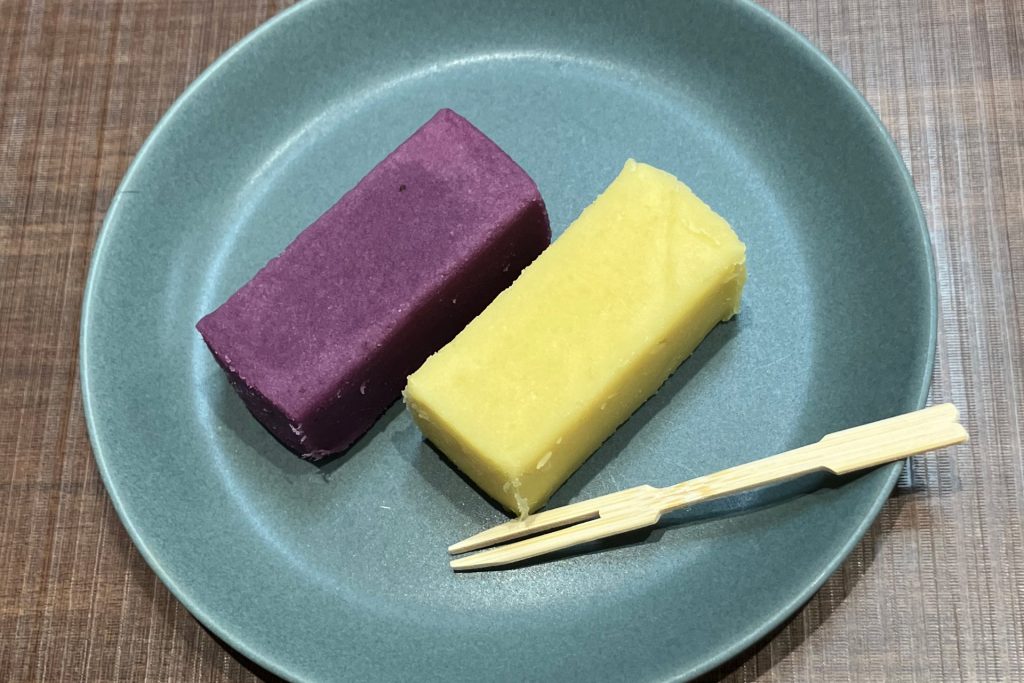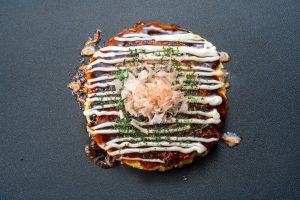Yokan is a traditional Japanese confectionery, found everywhere from convenience stores to souvenir shops. While it’s widely known as a sweet treat, its rich history, diverse varieties, and unique characteristics are far less familiar to most people.
In this article, we’ll dive into the origins of yokan, its types, intriguing fun facts, and innovative ways to enjoy it. By the end, you’ll surely think, “Wow, yokan is fascinating!” So, let’s explore the world of yokan together!
The History of Yokan – Did You Know It Originated in China?

The Roots of Yokan: A Soup Made from Lamb?
When we think of yokan, we imagine a sweet jelly-like dessert. However, its name originates from “yang geng,” a Chinese dish that means “lamb soup.” This dish was introduced to Japan during the Muromachi period (14th to 16th century) by Zen monks.
In Japan, the original Chinese dish was adapted to suit Buddhist vegetarian dietary practices, replacing lamb or meat with plant-based ingredients like wheat and beans to create a non-sweet dish suitable for temple life.
The Transformation of Yokan in the Edo Period
During the Edo period, when sugar became more readily available in Japan, yokan evolved into a sweet confectionery. Steamed yokan became the norm and gained popularity thanks to its extended shelf life. Later, with the inclusion of agar (kanten), “neri yokan” (jellied yokan) was developed, becoming a long-lasting snack and a staple as a gift or accompaniment for tea.

Types of Yokan: A Wide Variety to Explore

Did you know that there are several types of yokan? Each has its unique characteristics and flavors. Let’s take a look at the most popular ones:
The Main Varieties of Yokan
- Neri Yokan: This is the most common type of yokan you’ll find. Made from red beans, agar, and sugar, this classic dessert is recognized for its smooth and rich texture.
- Mushi Yokan (Steamed Yokan): Made without agar and instead mixed with wheat flour, this steamed version is softer and has a moist, spongy texture.
- Mizu Yokan (Water Yokan): This is a summer favorite! Water yokan has higher water content compared to other types, making it a cool and refreshing sweet treat when chilled.
- Kuri Yokan (Chestnut Yokan): A luxurious version of yokan that features whole chestnuts enveloped in the soft jelly for a taste of autumn.
- Shio Yokan (Salted Yokan): This unique version combines sweetness with a subtle salty flavor, creating a balanced and less cloying taste. It’s a favorite among adults.
Fun Facts About Yokan
What Makes Yokan So Interesting
Did You Know Yokan Can Be Used as Emergency Food?
Surprisingly, yokan has a long shelf life thanks to its high sugar content, which acts as a natural preservative. In fact, it has gained attention as emergency food, especially after disasters like earthquakes.
Why Is Yokan Rectangular?
The rectangular shape of yokan is not just for aesthetics—it also serves a practical purpose. Its shape makes it easy to cut into equal portions. Moreover, the stable, heavy design gives it a sense of traditional luxury, making it ideal as a gift.
Best Teas to Pair with Yokan
Although yokan is often paired with green tea, it also goes wonderfully with hojicha (roasted green tea) and matcha. Surprisingly, pairing it with coffee or black tea can also create an exciting flavor combination!
3 Recommended Yokan Shops for Beginners
Kanou Shoujuan
Based in Otsu City, Shiga Prefecture, “Kanou Shoujuan” is a renowned traditional Japanese confectionery shop known for its delicate and flavorful sweets. Among its most popular offerings is “Amo,” a type of yokan (sweet bean jelly). With its refined sweetness and smooth texture, this treat is highly regarded as a premium gift item.
Ikkoan
Located in a quiet residential area in Bunkyo, Tokyo, Ikkoan is known for its handmade yokan. Their neri yokan emphasizes the rich, natural sweetness of red beans. It’s a hidden gem recognized by wagashi enthusiasts.
Toraya
When it comes to yokan, “Toraya” is one of Japan’s most iconic and historic confectionery shops. Its signature product, “Yoru no Ume” (Night Plum), is known for its refined sweetness and is the most popular choice among customers.
Creative Ways to Enjoy Yokan

Yokan is delicious on its own, but with a few twists, you can enjoy it in even more exciting ways!
Yokan Toast
Slice yokan thinly and place it on toast. You’ll get a flavor similar to “sweet bean paste and butter,” but with a unique twist!
Yokan with Ice Cream
Chop yokan into small cubes and sprinkle it over vanilla ice cream. This Japanese-style dessert creates a fusion of creamy and chewy textures.
Yokan as a Dessert Topping
Top pancakes, waffles, or even parfaits with yokan slices. Its sweetness and jelly-like texture make it an ideal addition!
Conclusion
Yokan is so much more than just a sweet treat—its deep history, wide variety, and endless versatility make it a symbol of Japan’s rich culinary culture. Whether you want to learn more about its types, explore famous shops, or try new creative ways to enjoy it, yokan offers something special for everyone.
Next time you enjoy yokan, why not think beyond its traditional roots and discover your own way of celebrating this timeless confectionery?















